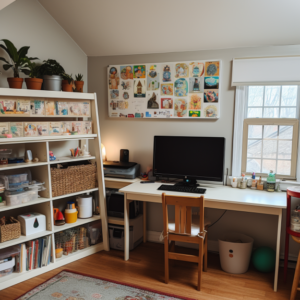The integration of play is a cornerstone of preschool education, fostering not only enjoyment but also crucial developmental skills. In the context of virtual preschool, striking a balance between fun and education becomes paramount. This article explores the pivotal role of play in virtual preschool settings, emphasizing the benefits, challenges, and strategies for ensuring a harmonious blend of enjoyment and learning.
The Significance of Play in Preschool Education:
1. Holistic Development:
- Play serves as a holistic developmental tool, promoting physical, social, emotional, and cognitive growth. Virtual preschools must recognize and replicate the diverse benefits of play in their online environments.
2. Social Interaction and Collaboration:
- Play encourages social interaction and collaboration among preschoolers. Virtual settings should incorporate opportunities for group play, fostering connections, and communication among children.
3. Creativity and Imagination:
- Play nurtures creativity and imagination, essential components of early childhood development. Virtual preschools should provide platforms and activities that spark imaginative play, allowing children to explore and create in a digital space.
4. Problem-Solving Skills:
- Play-based learning enhances problem-solving skills. Virtual activities should present challenges that encourage critical thinking, decision-making, and the application of knowledge in a playful context.
5. Language and Communication Development:
- Play supports language and communication development. Virtual preschools should incorporate interactive games, storytelling, and collaborative activities that promote verbal expression and language acquisition.
6. Emotional Regulation:
- Play aids in emotional regulation, allowing preschoolers to express and manage their feelings. Virtual settings should include activities that provide emotional outlets, fostering a supportive and understanding environment.
Challenges in Integrating Play in Virtual Preschool:
1. Screen Time Concerns:
- Balancing screen time is a challenge, as excessive exposure can have adverse effects on children’s well-being. Virtual preschools must carefully design play activities that minimize screen time while maximizing engagement.
2. Limited Physical Interaction:
- Virtual settings lack the physical interaction inherent in traditional play. To overcome this challenge, educators should incorporate activities that encourage movement, gestures, and physical engagement within the constraints of the online environment.
3. Technology Access Disparities:
- Disparities in technology access may limit some children’s participation in virtual play. Strategies to overcome this challenge include providing alternative activities, distributing printed materials, or facilitating communication through non-digital means.
4. Ensuring Educational Objectives:
- Play in virtual preschool should align with educational objectives. Educators must carefully design and curate play activities to ensure that they contribute to learning outcomes while maintaining an enjoyable experience for children.
Strategies for Balancing Fun and Education in Virtual Preschool Play:
1. Incorporate Multimodal Activities:
- Design play activities that engage multiple senses, incorporating visual, auditory, and tactile elements. This ensures a rich and immersive experience, even in the virtual environment.
2. Blend Play with Learning Objectives:
- Integrate play seamlessly with learning objectives. Virtual activities should be purposeful, aligning with educational goals while providing an enjoyable and playful experience for preschoolers.
3. Encourage Parental Involvement:
- Foster parental involvement in virtual play by providing guidance, resources, and suggested activities for families to enjoy together. This collaborative approach strengthens the connection between home and virtual preschool.
4. Utilize Educational Apps and Platforms:
- Leverage educational apps and platforms specifically designed for virtual preschool play. These tools often combine engaging content with educational elements, offering a well-rounded play experience.
5. Create Virtual Playgroups:
- Establish virtual playgroups to facilitate social interaction among preschoolers. Scheduling regular online play sessions allows children to connect, share experiences, and engage in collaborative play.
6. Implement Gamified Learning:
- Integrate gamified elements into virtual play activities. Gamification enhances engagement, motivation, and the overall enjoyment of learning, making virtual play both fun and educational.
7. Provide Play-Based Challenges:
- Introduce play-based challenges that stimulate problem-solving skills. Virtual preschools can organize online challenges or scavenger hunts that encourage critical thinking and collaboration among children.
8. Balance Structured and Unstructured Play:
- Strike a balance between structured and unstructured play. While some activities may have clear objectives, allowing time for free play allows children to exercise creativity and explore their interests independently.
9. Facilitate Interactive Storytelling:
- Incorporate interactive storytelling sessions where children actively participate in creating narratives. This approach combines language development with imaginative play, fostering a love for storytelling.
10. Prioritize Outdoor Play Activities:
csharpCopy code
- Design virtual activities that encourage outdoor play. Virtual preschools can organize activities such as nature walks, virtual picnics, or gardening sessions, promoting a connection with the natural world.
Conclusion:
The role of play in virtual preschool is indispensable, contributing significantly to the overall development and well-being of young learners. By understanding the importance of play, acknowledging the challenges, and implementing thoughtful strategies to balance fun and education, virtual preschools can create enriching and enjoyable learning experiences for preschoolers. The key lies in fostering a virtual environment where play is not only an integral part of the educational journey but also a source of joy, creativity, and meaningful connections for every child.


